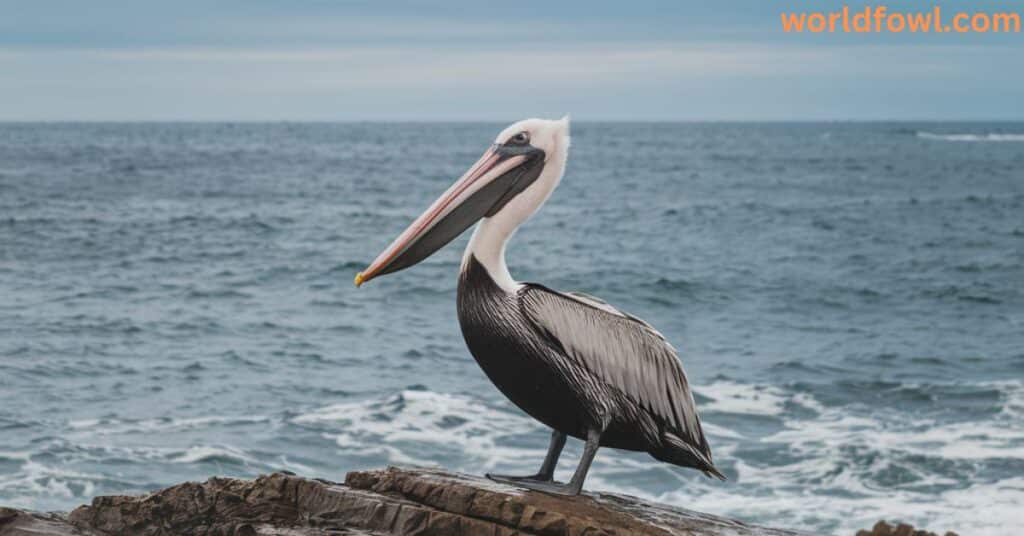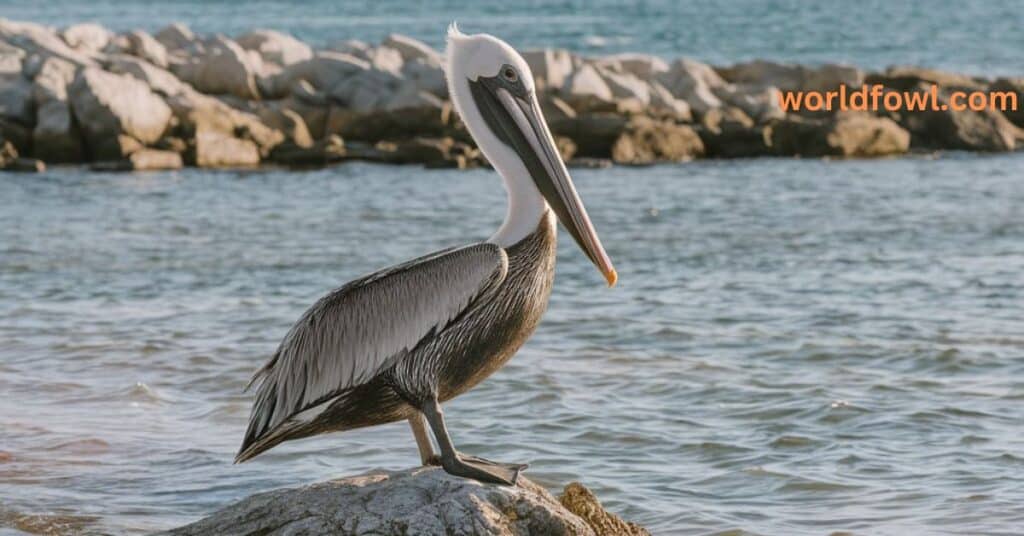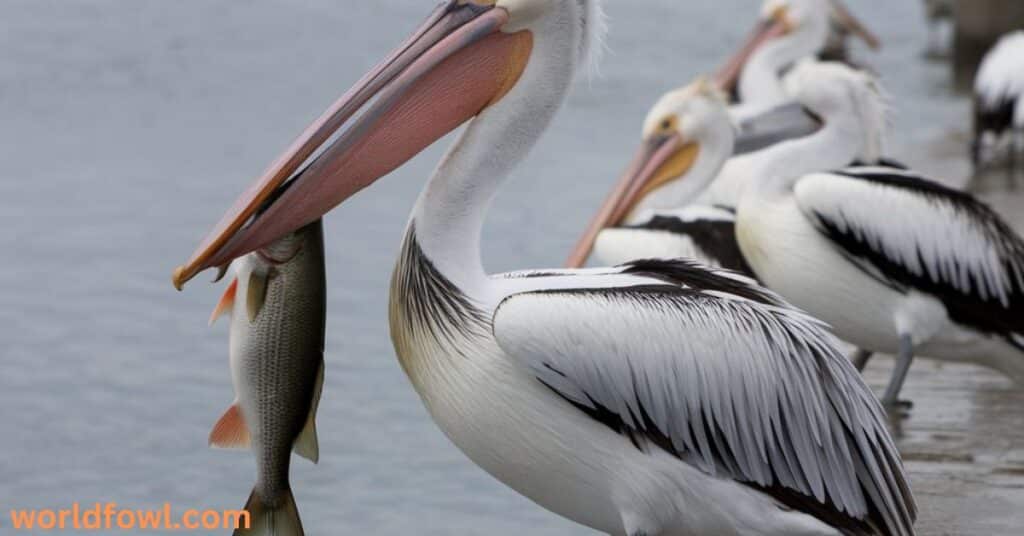Pelicans are among the most recognizable coastal birds in the world. Their large, distinctive bills and graceful flight patterns make them fascinating to observe, especially for those who enjoy bird watching. But while most people admire these creatures from a distance, the question often arises: Do pelicans attack humans?
In this deep dive, we will explore the behavior of pelicans, their interactions with humans, and what could lead to aggression. We’ll examine the factors behind rare instances of pelican aggression, and offer tips on how to observe and interact with them safely. Along the way, we will also provide insights into their natural habitat, nesting behavior, and how human activities may influence their temperament and actions.
What Are Pelicans?

Pelicans belong to the family Pelecanidae, which includes eight distinct species, ranging from the American White Pelican to the Brown Pelican. Known for their large size and unique physical features, pelicans are coastal birds that typically live near inland waters, marshes, and especially, coastal areas where fish are abundant.
Physical Characteristics and Behavior
One of the most defining characteristics of pelicans is their large, elongated bill and the expansive pouch beneath it. This pouch is used to catch fish during their distinctive fishing techniques, which can include diving from the air or scooping fish from the water’s surface. A pelican’s bill can stretch up to 18 inches long, making it an impressive tool for their hunting style.
Pelicans have webbed feet and broad wings, allowing them to fly effortlessly over long distances. They are migratory birds, often traveling to find optimal feeding grounds. While pelicans are known for being calm and gentle, their behavior can vary depending on the season, environment, and interaction with humans.
Here is a table summarizing the key details about Pelicans:
| Aspect | Description |
|---|---|
| Scientific Family | Pelecanidae |
| Species Count | 8 species |
| Physical Characteristics | Large bill with expansive pouch, webbed feet, broad wings, and long neck |
| Habitat | Coastal areas, inland waters, marshes, and wetlands |
| Diet | Primarily fish, but sometimes smaller marine life or aquatic invertebrates |
| Hunting Techniques | Diving or scooping fish using their large bills |
| Flight Pattern | Powerful, gliding flight using broad wings for long-distance migration |
| Nesting Sites | Typically on islands, in secluded areas, often on the ground or in trees |
| Lifespan | 15 to 25 years in the wild, though many factors can influence their lifespan |
| Conservation Status | Some species are threatened or vulnerable due to habitat loss, pollution, and climate change |
This table provides an easy-to-read breakdown of pelicans, showcasing their key physical and behavioral traits, habitat, and conservation status.
See Also : Do Anteaters Attack Humans? A Closer Look!
Are Pelicans Aggressive?

The general temperament of pelicans is non-aggressive. These birds typically keep to themselves, hunting fish in their natural habitats, nesting in protected areas, and maintaining a peaceful presence around humans. However, like all wild animals, pelicans have natural instincts that can lead to aggressive behavior when they feel threatened or provoked.
Pelicans can become defensive if they perceive a direct threat to themselves, their territory, or their young. This aggression is often linked to self-preservation, rather than a desire to attack humans for no reason. Understanding pelican behavior is crucial to preventing any potential conflict with them.
Pelican Aggression and Stress
Aggression in pelicans is most commonly triggered by stress. When pelicans feel cornered or threatened, their natural reaction is to use their sharp bill as a means of defense. But this does not necessarily mean that pelicans are hostile toward humans by nature. Instead, it is more about self-defense.
Stress triggers include:
- Fear of predators: Pelicans, like many birds, are naturally cautious around potential threats.
- Territorial defense: Pelicans are protective of their nests and young, especially during the nesting season.
- Food dependency: Pelicans that become too reliant on human-provided food sources may become more aggressive when competing for food, both with other birds and humans.
See Also : Do Sloths Attack Humans? The Shocking Reality!
Temperament: How Do Pelicans Interact with Humans?

Generally, pelicans are not aggressive toward humans. They are curious creatures that may approach people, particularly in areas where they have been fed by humans before. However, their behavior can vary depending on the context and their personal experiences with humans.
Calm and Curious Creatures
In most interactions with humans, pelicans tend to be curious rather than confrontational. In places where humans frequently feed pelicans or interact with them, these birds have learned to associate people with food. This can lead to pelicans becoming less fearful and more approachable. However, pelican temperament can also shift if humans get too close to their nests or their food sources.
Feeding and Human-Pelican Interaction
Feeding pelicans in public areas can lead to problematic interactions. While many people enjoy feeding wildlife, it’s important to understand that it can change an animal’s natural behavior. When pelicans are fed by humans, they may begin to expect food and lose their natural hunting instincts. This dependency on humans for food can alter their behavior, making them more likely to approach humans aggressively when seeking food.
Warning signs of discomfort or aggression include:
- Raised wings or pouches: This is a sign that the bird feels threatened and is preparing to defend itself.
- Loud vocalizations: Pelicans can make distress calls if they feel stressed or agitated.
- Rapid movements with their bill: If a pelican feels threatened, it may attempt to peck as a warning or defense.
See Also : Do Bobcats Attack Humans? Uncovering the Risk!
Why Would a Pelican Attack a Human?

While rare, there have been documented instances of pelicans attacking humans. These incidents typically occur when the bird feels threatened, hungry, or cornered. Let’s look at the specific circumstances that can lead to pelican aggression.
Defending Territory and Nesting Areas
One of the most common reasons for pelican aggression is the defense of their territory and nesting areas. During the nesting season, pelicans are more territorial and protective of their eggs or chicks. A sudden intrusion into their nesting area can lead to aggressive behavior, especially if the bird feels its young are in danger. Pelicans may attempt to chase away intruders using their sharp bills.
Nesting season typically occurs in late spring and early summer, although this can vary depending on the pelican species and geographical location. During this time, it is best to stay a safe distance from pelicans and avoid disturbing them.
Food Competition and Dependency
Another factor contributing to pelican aggression is food competition. Pelicans are opportunistic feeders, and they will often compete with other birds or even humans for food. In areas where pelicans are regularly fed by humans, they may become more aggressive in seeking food, especially if they are not finding enough to eat in their natural environment.
This food dependency can be dangerous for both pelicans and humans. Pelicans may begin to associate people with food, which can lead them to approach humans more aggressively. This aggressive behavior may seem sudden, but it is driven by the bird’s need to secure food. { Do Pelicans Attack Humans }
Stress and Fear
Pelicans, like all animals, have a fight-or-flight response when they feel threatened. If a pelican is approached too quickly or trapped in a confined space, it may resort to defensive behavior. If a pelican is sick or injured, it might become more aggressive due to the pain or discomfort it is experiencing.
Aggressive behavior in pelicans is most commonly seen in situations where the bird feels there is no escape or when it feels threatened by something unexpected.
See Also : Do Penguins Attack Humans? Surprising Facts!
Real-Life Encounters: Rare Instances of Pelican Aggression

Though pelican aggression toward humans is uncommon, there have been rare cases where these birds have become hostile. These incidents usually stem from the factors we have already discussed: defense of territory, food competition, or fear. { Do Pelicans Attack Humans }
Case Study 1: The Brown Pelican Incident
A case occurred at a popular pier in California where a Brown Pelican became aggressive towards a visitor who got too close to its nesting site. The pelican, feeling threatened, used its sharp bill to defend its eggs. The attack was brief but left the person with minor scratches. Experts recommend maintaining a distance of at least 10 feet from nesting pelicans to avoid such incidents.
Case Study 2: Feeding Gone Wrong
Another rare instance involved a pelican at a public beach who became aggressive when a tourist holding a sandwich was approached by the bird. The pelican, searching for food, attempted to grab the sandwich out of the tourist’s hand. In the process, the pelican accidentally pecked the tourist’s hand. Though the injury was minor, it highlighted the dangers of feeding wildlife and the change in behavior it can cause.
See Also : Why Don’t I Hear Mourning Doves Anymore? Reasons & Misconceptions
How to Safely Observe or Approach Pelicans

While aggressive behavior in pelicans is rare, it’s important to follow some basic guidelines to ensure safe wildlife observation and reduce the risk of conflict. Respecting pelicans’ natural behavior and habitat protection is key to having a positive and safe interaction with these birds.
Best Practices for Wildlife Observation
- Respect their space: Always give pelicans plenty of room. If you encounter a pelican, observe from a distance and never approach the bird directly.
- Avoid feeding pelicans: Feeding pelicans in public spaces can alter their natural behavior and increase the likelihood of human-wildlife conflict.
- Observe from afar: Use binoculars or a zoom lens to get a closer look at pelicans without disturbing them. This keeps both you and the bird safe.
- Stay calm and quiet: Sudden movements or loud noises can startle pelicans, potentially causing them to act defensively.
What to Do if a Pelican Approaches You
If a pelican comes too close or seems to be approaching aggressively:
- Remain calm: Do not panic or make sudden movements.
- Slowly back away: Give the bird plenty of space to retreat if it feels threatened.
- Do not feed or touch the pelican: Keep your distance, as feeding can encourage unwanted behavior.
Final Verdict: Do Pelicans Pose a Threat to Humans?
While pelican attacks on humans are rare, it is important to understand that these birds are wild animals. Aggressive behavior can occur under specific circumstances, such as protecting their young, competing for food, or feeling threatened. However, pelican aggression is not common, and with the proper precautions, humans can safely observe these remarkable birds without incident.
Pelicans are an essential part of our coastal ecosystems, and it is important to respect their natural behavior and habitats. Whether you’re watching pelicans as part of wildlife observation or simply enjoying their presence on the beach, always remember that these birds are best admired from a safe distance.
By understanding pelican behavior and respecting their space, you help protect both the birds and yourself.
FAQs: Do Pelicans Attack Humans ?
Do Pelicans Attack Other Animals?
Pelicans are primarily fish-eaters, and while they may engage in occasional conflict with other birds during feeding, they are not typically aggressive toward other animals. However, pelicans will defend their territory and nests if they feel threatened. { Do Pelicans Attack Humans }
Can Pelicans Be Dangerous to Pets?
Pelicans are not generally a threat to pets, but smaller animals, especially those that might approach a pelican’s nesting area, could provoke a defensive response. It’s important to keep pets away from wild birds.
What Should I Do if a Pelican Approaches Me?
If a pelican approaches you, stay calm and slowly back away. Do not attempt to feed or touch the bird. Giving the pelican space is the best way to avoid aggression.
Are Pelicans Protected Under Wildlife Laws?
Yes, pelicans are protected by wildlife laws in many countries, especially during the nesting season. Disturbing or harming pelicans is illegal in many places.
Is It Safe to Feed Pelicans in Public Areas?
Feeding pelicans is not safe or advisable. It can alter their natural behavior and cause them to become more aggressive when seeking food. It’s always better to observe them without feeding.
Conclusion: Do Pelicans Attack Humans?
To sum up, pelicans are not naturally aggressive toward humans, and instances of pelican attacks are rare. The aggression that does occur is usually triggered by factors such as territorial defense, food competition, or stress. By understanding pelican behavior and respecting their space, we can enjoy these majestic birds safely and responsibly.
Whether you’re a bird watcher or simply enjoy spending time by the water, remember that pelicans are a vital part of the environment. Let’s continue to appreciate and respect these fascinating creatures without disturbing their natural behavior. { Do Pelicans Attack Humans }

Henry James is a seasoned blogger and a passionate storyteller on “World Fowl.” With years of experience crafting engaging content, he brings a unique blend of expertise and creativity to his writing. Henry specializes in exploring diverse topics with depth and clarity, captivating readers worldwide.







